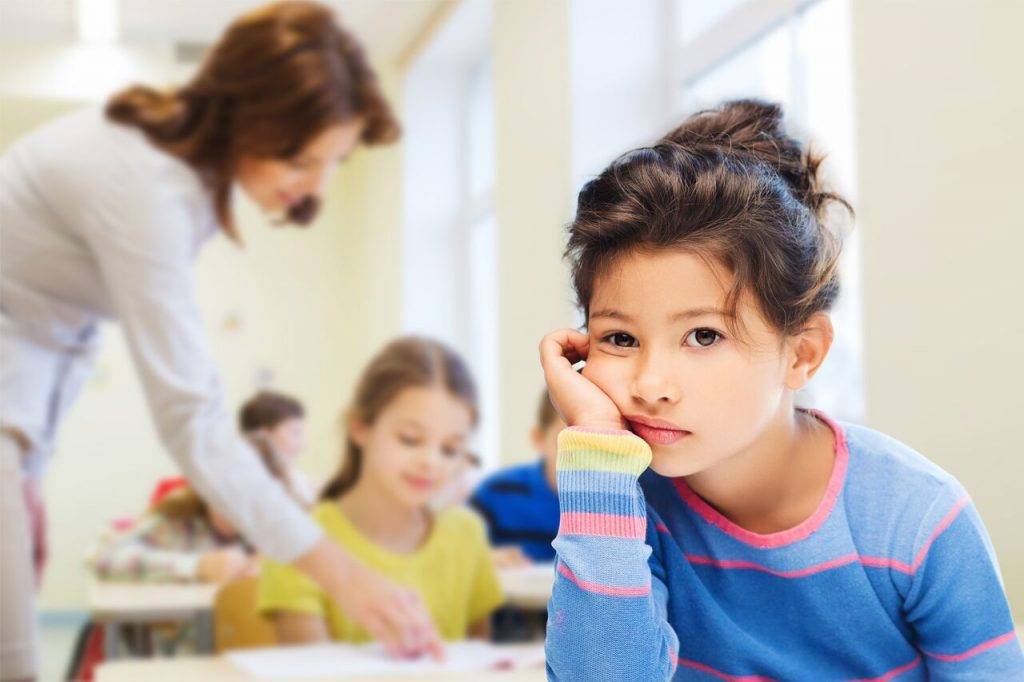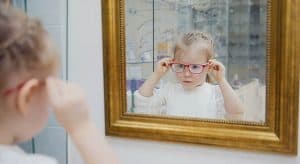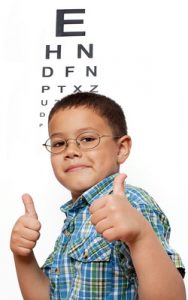Children need excellent vision to succeed academically. What better way to start off the new school year than by ensuring that their most important learning tool, their vision, is up to par?
Back-to-school eye exams set kids up for success. Here’s why.
Why Do Kids Need Eye Exams Before The New School Year?
Classroom learning is up to 80% vision-based, and children who don’t see well are more prone to falling behind.
Consider what’s involved: reading, writing, seeing the whiteboard, focusing, and even following moving images on a screen. A deficit in any of the 17 visual skills necessary for optimal learning may negatively impact the way your child learns and behaves.
A few examples of essential visual skills include:
- Eye tracking
- Binocular coordination
- Convergence
- Visual memory
- Visual thinking
- Central visual acuity
- Peripheral vision
- Color and depth perception
- Visual integration
It’s important to note that diagnosing a visual problem takes the care and expertise of a pediatric optometrist. School vision screenings don’t evaluate a child’s visual skills or examine the health of their eyes.
That’s why it’s important to have a child’s eyes and vision evaluated by an optometrist every new school year, especially if they exhibit signs of visual deficits.
Behaviors and Symptoms That May Indicate a Vision Problem
Even if a child has great visual acuity, often called “20/20 vision,” poor visual skills can manifest in several ways. Keep an eye out for the following symptoms that could indicate a vision problem in your child:
- Frequent eye rubbing
- Head tilting
- Squinting
- Frequent complaints of headaches
- Frequent blinking and eye tearing
- Covers or closes one eye when focusing on something
- Loses place when reading
- Poor reading comprehension
- Avoidance of homework and other visually intensive activities
- Sits very close to the television or computer screen
- Holds books very close to their face
- Has difficulty concentrating
How Often Should Children Have Their Eyes Examined?
According to the American Optometric Association, children should have an eye exam by the time they are 1 year old, at least once between ages 3 and 5 years old, and annually after first grade until they graduate from high school.
Your optometrist will recommend the best frequency for your child’s eye health and lifestyle.
What’s Involved in a Routine Eye Exam?
Your optometrist will assess your child’s complete eye health and perform several tests to determine your child’s visual acuity and other visual skills.
A pediatric optometrist may use toys and games to facilitate cooperation if necessary, and ensure that the entire process is a comfortable and pleasant experience.
Knowing your family history of eye diseases and conditions will help your optometrist provide the best care possible to every family member.
If any visual deficit is found, such as a change in lens prescription, your optometrist will guide you through the various options of eyewear and contact lenses that best suit your child.
Don’t Skip Your Child’s ‘Back-To-School’ Eye Exam!
The new school year is an excellent time to bring your child for a visit to the optometrist to ensure that their vision is ‘School-Ready’!










